Actor, producer, writer and now director, Sarah Carter, has her first Tribeca-bound feature film, In Her Name, premiering June 12. With this directorial debut, Carter shys away from nothing, rather taking on life's biggest subjects: family ties, marital strains, motherhood, purpose and death. The work, much-inspired by the bravery and ambition of Lebanese abstract artist Huguette Caland, and driven by a palpable feminine force, is a classic Hollywood tableau: black and white, with moments of darkness and light. It speaks from a place of freedom—creative freedom—and casts an empowered, female gaze upon a sequence of difficult decisions. Ultimately, it's the current of maternal leadership and love that moves the story forward, inspiring reflection, compassion, forgiveness, and healing.

Carter sat down with the film's leads, fellow actor-producer-writer-director, Philippe Caland, Huguette's son, and actress-painter, Erin Hammond, for a fireside style conversation about the full experience of creating In Her Name. What follows is an honest look at what it means to make art while facing intense internal and external obstacles.
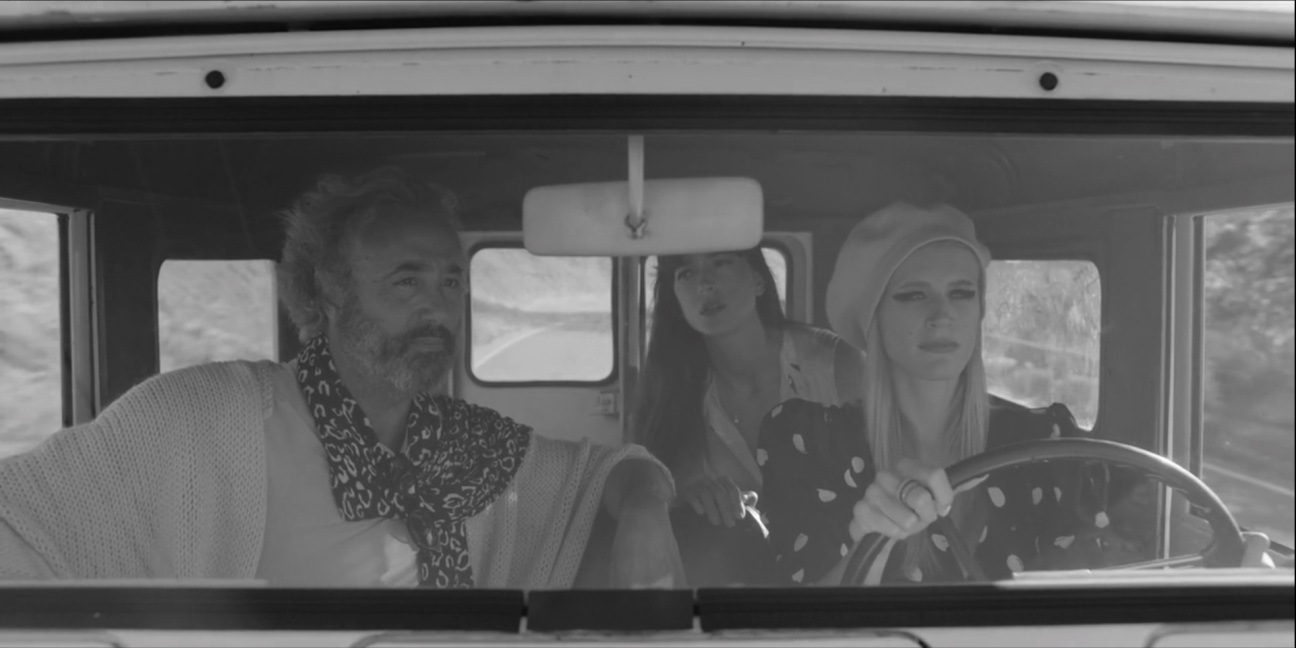
Sarah Carter: When we had to take time off because of COVID-19, I had to rewrite the script to account for safe shooting as well as integrate inspired revelations that came as a result of having time to dig into the editing process. In many ways, I felt the shut down was a blessing to our film. What was your reaction when you read the script for the first time after we had been off for three months?
Philippe Caland: I realized that you hadn’t stopped thinking about the story during those three months and took the time to improve the script. It almost seemed like a serendipitous break. When I revisited it, I was even more excited than before to dive in.
Erin Hammond: Those three months were honestly an awakening for me, and put a lot of things in my life in check. There were a lot of factors swimming around in my brain as far as filming, life in general, the industry, etc. Let’s be straight forward, the whole world was in disarray and wondering if tomorrow would come. So I really think it came down to centering my focus on the present day that was in front of me and remembering why we started the film to begin with; the story we wanted to tell and the healing we wanted the world to receive. So as I read the script over, some of the scenes were changed as it had to; due to the pandemic protocols and regulations, and I remember thinking, “Ok, we can do this.” We were built for this. I had a new desire ruminating inside me to inspire the human spirit and give hope with our creation and the real power we had to empower others.
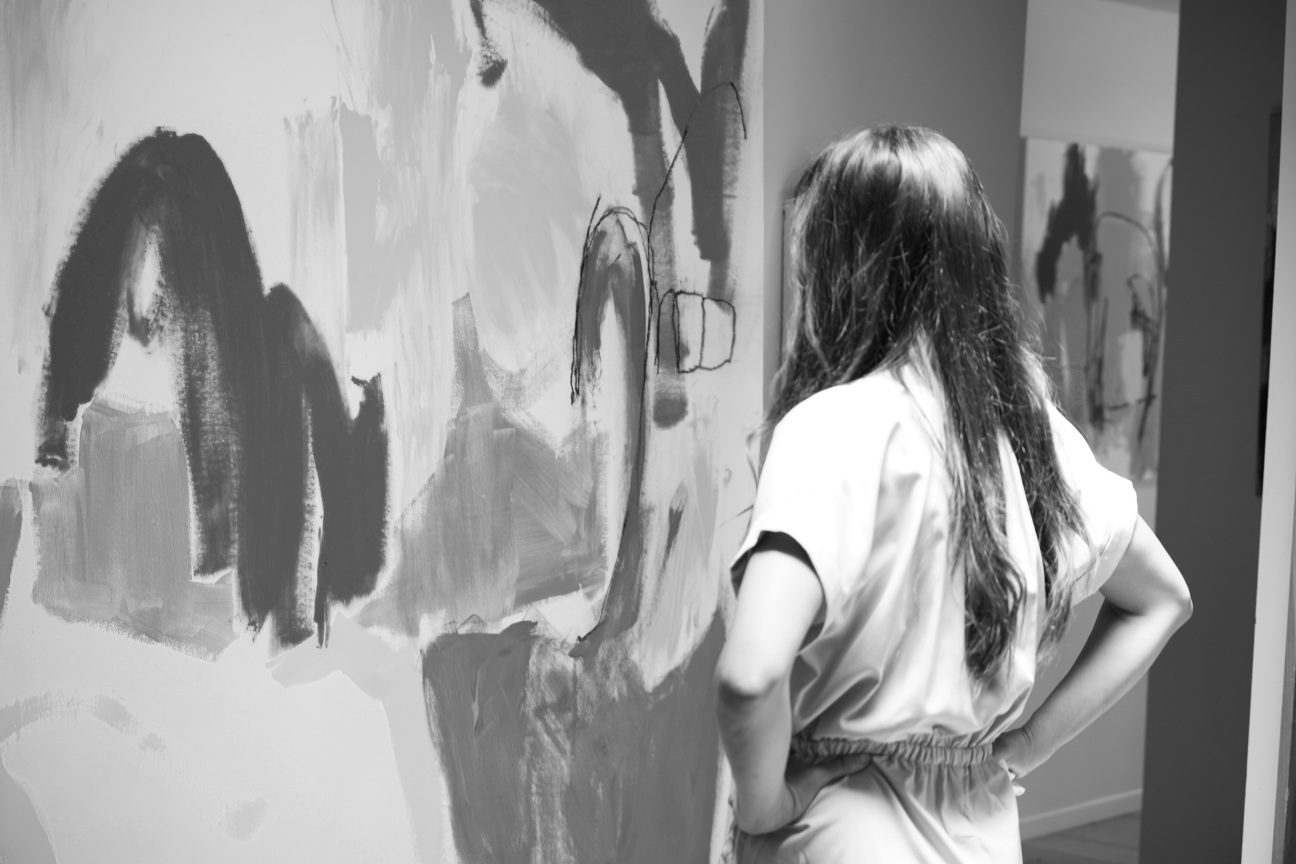
SC: Erin, you took on the role of Art Director. What was it like to both star in the film and art direct? I was in awe of your ability to take on both jobs with such devotion.
EH: It was a bit of a challenge at the beginning, but in that challenge I became aware of my potential and the positive aspects that inevitably made the process better. As I really started to design the look of each scene in my mind, and to feel the atmosphere, it actually helped develop my character, Freya. The film primarily takes place in her radical home. I became acutely aware of all the details embodying that house from the handprints on the walls to the scratches on the floor, which made sense because Freya lived there her whole life. As all the details came together, my character knew that home from the inside out of my being. It became a character study and the two positions as actor/art director became so fluid.
SC: Philippe, can you talk about Ed Moses and your relationship with him? As a follow up, what was it that made you so emotional when standing in front of his paintings in the film? That is one of my favorite moments in the film, and I was thoroughly surprised by where you took that moment. It was certainly not on the page. You had everyone at the monitors emotional.
PC: Ed would come visit my mother a few times a week, so over the years, I got to know him well and cared for him. In that scene in particular, the emotion was easy to access. Sarah played the music she knew she was going to use for the scene while I was facing Ed’s paintings. I allowed for Ed’s work to be the centerpiece of the scene by being fragile. The music, and those memories, drummed up the emotions.

SC: Speaking of the art, Erin, what was the experience of creating almost all of the art featured in the film and to have some of it depicted as highly valuable while your character devalues some of the work and throws it away on her own? Even I had a hard time watching you throw away such beautiful art. Your character was charged with such rage that I remember feeling protective of your pieces when you were tossing them at those garbage bins take after take.
EH: This is a really good question. As we all experience highs and lows in life when it comes to confidence and self reflection on success and purpose; I believe along our individual paths we as humans have these special, intricate moments where revelation comes and things that were always kind of there become so overtly obvious to our souls. This film and the artistic process made me acutely aware of where I stood on my value as an artist and creator. I haven’t always had the most confidence but I’ve always put myself out there. There was a specific moment where Freya is throwing a ton of her work out and it happened to be stacks of my “real” college work and sketches and basically my life’s work being used as props, and I remember Sarah and Ian both were very aware of the way I was handling my work aggressively and without care, and they both said “be careful”. And in that moment I realized that the world had placed more value on my experience as an artist than I did. It was a private moment that really changed the way I moved forward in thought towards my experience and my work.

SC: Philippe, how do you feel about your mom’s mission to embrace her own sexual empowerment and to blaze the trail for all women in the art world affected your development as a man and as an artist?
PC: I grew up with my mother’s words, which were as powerful as her paintings. It took me a while to realize the synchronicity between her words and her art and that they both came from her truth. She gave me the permission not to ask for anyone’s permission and always told me to live day by day while planning for a thousand years. No one knew that the rock she was chipping at had a diamond in it. She was quiet and discreet with her mission and taught me patience.
SC: You both have lived unique and courageous lives, what would you say you have had to believe in and what has provided the greatest sense of prosperity for you?
EH: What has carried me through all circumstances has been my spirituality. My relationship to God, this body I live inside of and the ability to truly be present and in the moment that is right in front of me. This process we all are a part of called life has a way of throwing us sometimes the most bizarre, interesting and sometimes the hardest events that we have to face head on and tell our truth, stand in humility and grace, work hard and show up even when we don’t feel like it. These last few years I’ve really learned to question why I believe the things I do, but not overthink and to really love the people in front of me, and by god listen to my heart.
PC: Being an artist is like living with a tiger; you can’t afford not to feed the tiger because he will eat you. I’ve allowed a more powerful being into my existence and learned to embrace it, even when he growls. Knowing this brings me solace and lets me push on.
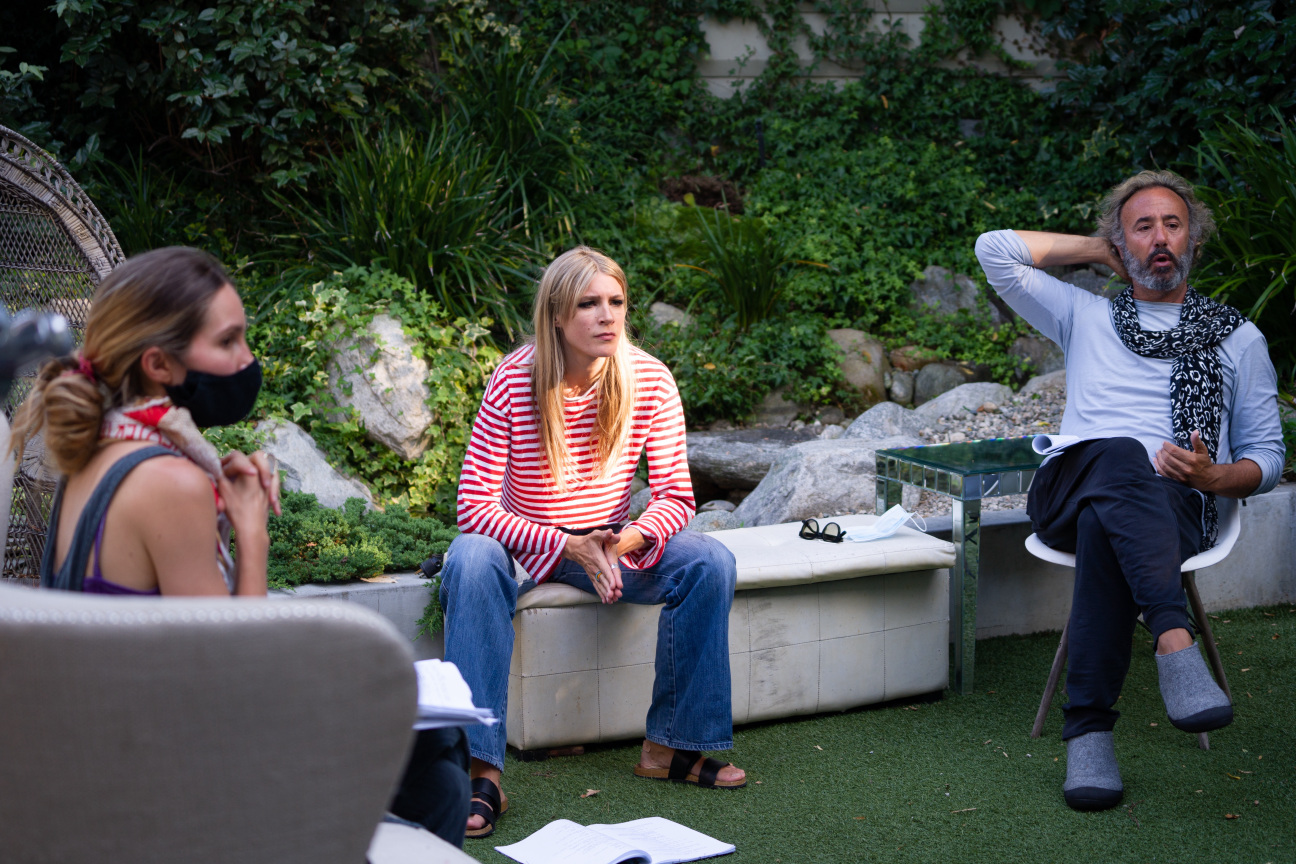
SC: Philippe, can you talk about your relationship with William Turner? His gallery set an instrumental stage for the turning point of our film. He was so engaged and generous with us when we met up with him on our tech scout. You could tell he really cares about supporting the artists he believes in.
PC: William Turner came to my mother’s home over the years. My office was across the wall from his gallery and we continued to see each other during the last years of my mom’s life. He kindly offered his gallery for the movie, which was a wonderful contribution considering the beautiful space and the fact that I felt very comfortable there. He definitely feels like a bridge between the past and present and all that’s happened in between.
William Turner told Erin and I a story about a musician who was so inspired by Ed Moses’ art that he invited her to sit in his office for three days while she wrote a beautiful piece of music. That story made it into the film and showcases major themes in the film such as what it is to be purely inspired and dealing with the grief and loss of a muse.
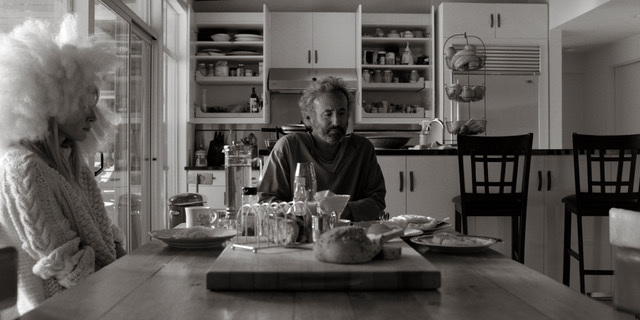
SC: Erin, how did you relate to that theme on a personal level?
EH: Oy Vey. What a packed question. To love and let go is such a complex, black hole. With those you love and the muses that come your way it is inevitable that they will always live inside you.
SC: Given we're all three Angelenos, the film approaches the city's art scene with some serious levity. In comparison, how close does it feel to your everyday, lived experience?
EH: In Her Name is very real, raw and based on the magical craziness we all have embarked on in this city. There is a sense of obscure comfort and humor that holds it all together. I was raised in Wisconsin, the oldest of seven children, so my upbringing was nothing like LA, but there is a sense of massive inspiration that feels like home inside the chaos.
PC: I live a different life than my character, but I relate to the artist that has had it with the art scene and erupts. His ego acted out and crippled him. I have a stronger instinct of survival than to allow my ego to shrink me. My character, Marv, is an old school artist who is at loss with how the art scene is changing. I don’t think that part is unique to Los Angeles—that art scene is always changing. The artist’s experience is ubiquitous in that sense.
SC: Philippe, without spoiling the ending, what emotional space did you find yourself in as the film progressed? Being that you are such a devoted father and husband yourself, what was it like to play the role of a famous artist who falls short in these realms?
PC: My wife allows me to create things she may never see and gives me the time to do it. My character’s wife, on the other hand, was more controlling and that didn’t work well for the couple. When they were young, they were free and played hard. When they became parents, she needed more structure but he couldn’t conform. He was Woodstock and she became the picket fence. The role was uncomfortable at times, but I understood it.
SC: The world is in deep need of feminine leadership and maternal healing right now. I like to think our film shines light on maternal instincts in a patriarchal society. What do you hope the audience's takeaway is, as it relates to female power and motherhood?
EH: I hope audiences take away the assurance that there is no specific right or wrong way to perform life as a woman. Freya and Fiona are both radical women from completely different sides of the spectrum, and that is ok. I hope humanity as a whole comes to a better understanding that what we as individuals choose to do in this life; male or female; our way of living, our spirituality and philosophies on life are all subject to our own free will, and there is grace and love to meet you exactly where you are. Power is in your belief.
PC: I was very lucky to be raised by a family that had structure and balance. It allowed my mother to develop as an artist and be a great mother at the same time. She was capable of having deep and personal conversations with me and that gave me all the comfort I needed. I think this is a major takeaway: that female power and motherhood can take many shapes and forms and that mothers have a specific, unique agency.
SC: What do you feel is the overall message of the film? For me, it’s freedom within the family dynamic by way of radical forgiveness and, so, love. It was fascinating to explore this theme by way of art versus religion and explore how both avenues are equally as valid as they are potentially toxic.
EH: I believe at the end of the day this film truly is a space holder for the viewer to find their way to the acceptance of our human differences. To question why you believe the things you do, where did this belief system come from, who told you who you are. After all of those answers, come to the peaceful resolution that every human can have their own experience and to truly respect our differences and to laugh along the way.



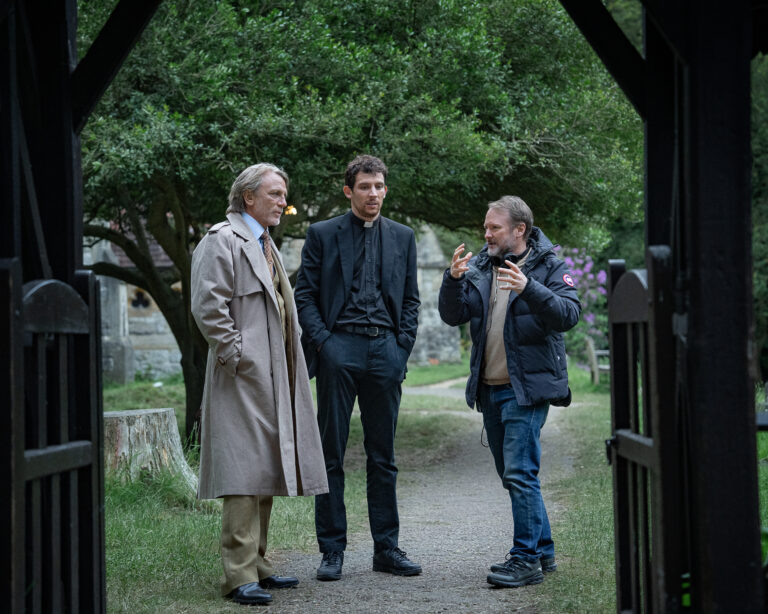


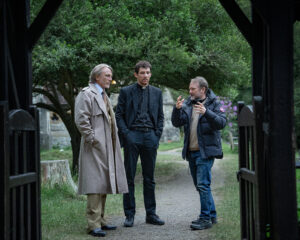



 in your life?
in your life?

